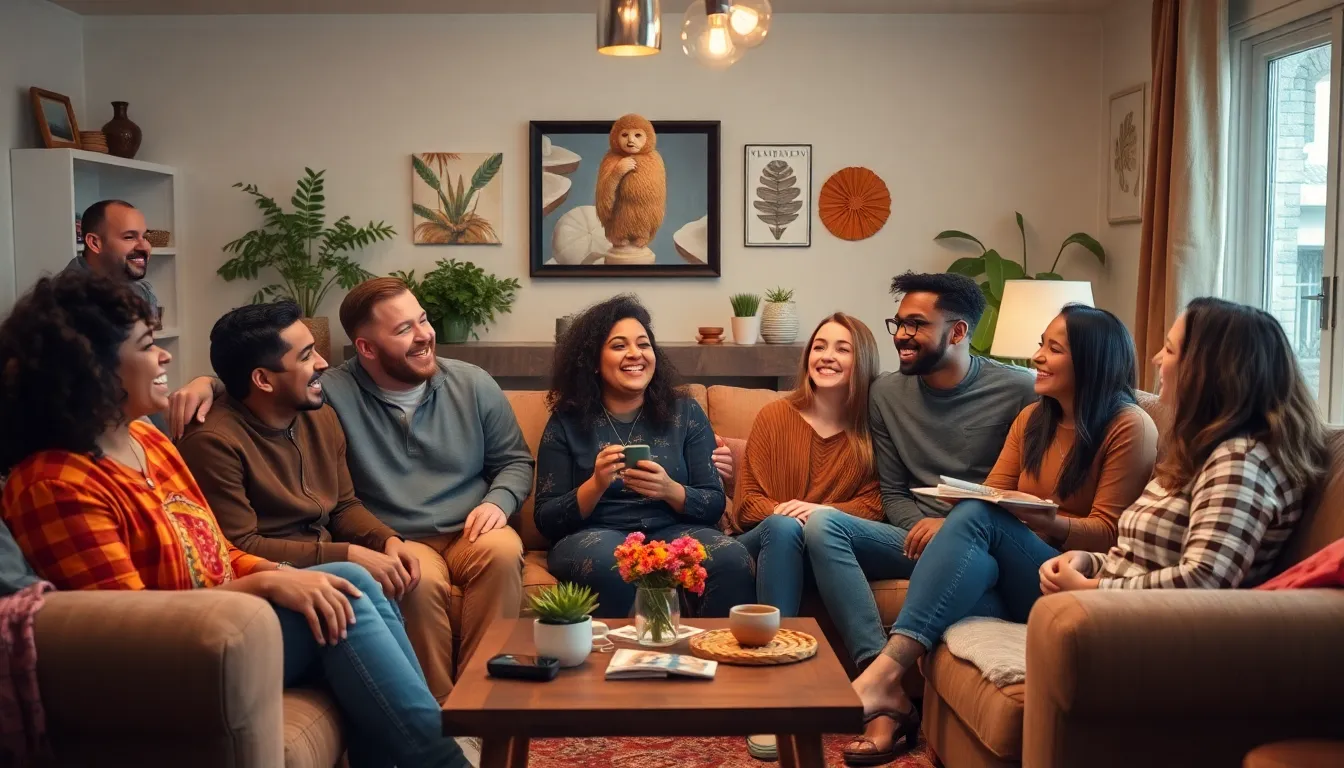Table of Contents
ToggleEveryone loves a good laugh, but sometimes the best chuckles come from the worst jokes. Bad jokes, often deemed corny or cheesy, have a unique charm that can lighten the mood and spark joy. They may elicit eye rolls or groans, but it’s precisely this absurdity that makes them so endearing.
In a world where humor often leans toward the clever or sarcastic, bad jokes remind us of the simple pleasure of laughter. Whether shared around a campfire or at a family gathering, these jokes create unforgettable moments and connections. So, get ready to embrace the hilarity of bad jokes that are funny, and discover why they hold a special place in the hearts of many.
Understanding Bad Jokes That Are Funny
Bad jokes possess a distinct charm that fosters laughter. Their simple structure and predictable punchlines often lead to unexpected joy.
The Appeal of Bad Jokes
Bad jokes offer a light-hearted escape. Their predictability invites groans, yet this discomfort often turns into amusement. Audience reactions vary, with some people eliciting genuine laughter while others express playful disdain. This combination creates a shared experience, enhancing social bonds. Additionally, bad jokes frequently incorporate puns or wordplay, engaging creative thinking and inviting playful conversations.
Types of Bad Jokes
Various types of bad jokes exist, each contributing to their overall hilarity.
- Puns: Wordplay that relies on similar sounding words or double meanings, such as “Time flies like an arrow; fruit flies like a banana.”
- Corny Jokes: Simple setups followed by cheesy punchlines, for example, “Why did the scarecrow win an award? Because he was outstanding in his field.”
- Knock-Knock Jokes: Classic humor that follows a particular structure, like “Knock, knock. Who’s there? Lettuce. Lettuce who? Lettuce in, it’s freezing out here!”
- One-Liners: Brief quips that deliver humor in a single sentence, such as “I used to hate facial hair, but then it grew on me.”
- Riddles: Questions that present a bit of a challenge, often with silly answers, like “What has keys but can’t open locks? A piano.”
These varieties provide a wealth of options for everyone to enjoy, highlighting the universal appeal of bad jokes.
Classic Bad Jokes

Classic bad jokes maintain a special place in humor. Their simplicity and predictability continue to evoke laughter across generations.
Examples of Timeless Bad Jokes
- Why don’t scientists trust atoms? Because they make up everything.
- What do you call fake spaghetti? An impasta.
- Why did the scarecrow win an award? Because he was outstanding in his field.
- How does a penguin build its house? Igloos it together.
- What did one wall say to the other wall? I’ll meet you at the corner.
Why They Still Work
Bad jokes elicit laughter through their structure. Simple setups lead to predictable punchlines, creating a comforting and familiar experience. Timing enhances their effectiveness, ensuring a light-hearted atmosphere. Shared groans or eye rolls foster camaraderie among listeners, strengthening social bonds. Ultimately, their innocence and silliness provide an enjoyable break from everyday seriousness, making bad jokes a staple in humor.
The Science Behind Humor
Understanding the mechanics of humor reveals why bad jokes resonate so strongly. Two critical elements underpin the charm of these jokes: surprise and psychological benefits.
The Role of Surprise in Bad Jokes
Surprise plays a central role in the enjoyment of bad jokes. Most bad jokes follow a familiar setup, leading audiences to anticipate a predictable punchline. The humor arises when the punchline, despite its simplicity, delivers an unexpected twist. This subversion of expectations creates a moment of cognitive dissonance, triggering laughter. Examples include puns that cleverly twist language or one-liners that play on common phrases. The element of surprise can shift discomfort into amusement, enhancing the overall comedic experience.
Psychological Benefits of Laughing at Bad Jokes
Laughing at bad jokes offers several psychological benefits. Laughter reduces stress and releases endorphins, promoting a sense of well-being. Bad jokes, often shared in group settings, foster social connections, providing a communal experience that strengthens relationships. Engaging with these jokes can also enhance mood and improve perspectives on everyday life. Their simplicity allows for inclusive humor, making it accessible for diverse audiences. By embracing the silliness of bad jokes, individuals cultivate a positive outlook, reinforcing the joy found in light-hearted interactions.
Crafting Your Own Bad Jokes
Creating your own bad jokes can be a delightful challenge. Writers can tap into their creativity and sense of humor to produce jokes that resonate with others, sparking laughter and connections.
Tips for Writing Bad Jokes
- Use Simple Structures: Stick to basic setups that are easy to understand. This simplicity keeps the focus on the punchline.
- Play with Puns: Incorporating puns can add a clever twist. Puns play on the double meanings of words to create humor.
- Timing Matters: Deliver jokes with appropriate pauses and inflections. Good timing enhances the punchline’s impact.
- Incorporate Nonsense: Embrace absurdity in jokes. Nonsensical elements often lead to unexpected humor.
- Draw on Common Experiences: Relate jokes to shared experiences. This connection helps audiences feel engaged and included.
- Experiment with Variations: Alter existing jokes by changing key elements. This experimentation can lead to fresh and funny results.
Common Pitfalls to Avoid
- Overcomplicating Jokes: Keep jokes straightforward. Complicated setups can confuse audiences and dilute humor.
- Being Too Esoteric: Avoid inside jokes that only a few understand. Humor thrives on inclusivity, so make jokes relatable.
- Failing to Edit: Revise jokes to enhance clarity and impact. Cutting unnecessary words sharpens the delivery.
- Neglecting the Audience: Consider the tastes of the intended audience. Jokes that resonate depend on an understanding of their preferences.
- Using Offensive Content: Stay clear of humor that could offend. Jokes should foster laughter, not discomfort or hurt feelings.
- Relying on Clichés: Steer clear of clichés that have lost their charm. Originality in jokes enhances their memorability and appeal.
Bad jokes hold a special place in the world of humor. Their charm lies in their simplicity and predictability which can turn a groan into a laugh. By embracing these corny quips people can enjoy light-hearted moments that foster connections and brighten moods.
Crafting bad jokes is an art that encourages creativity and fun. The joy of sharing these jokes creates a sense of camaraderie among friends and family. Ultimately the laughter they inspire serves as a reminder that sometimes the simplest jokes bring the greatest joy. So next time you hear a bad joke don’t hold back the laughter; it’s all part of the fun.








